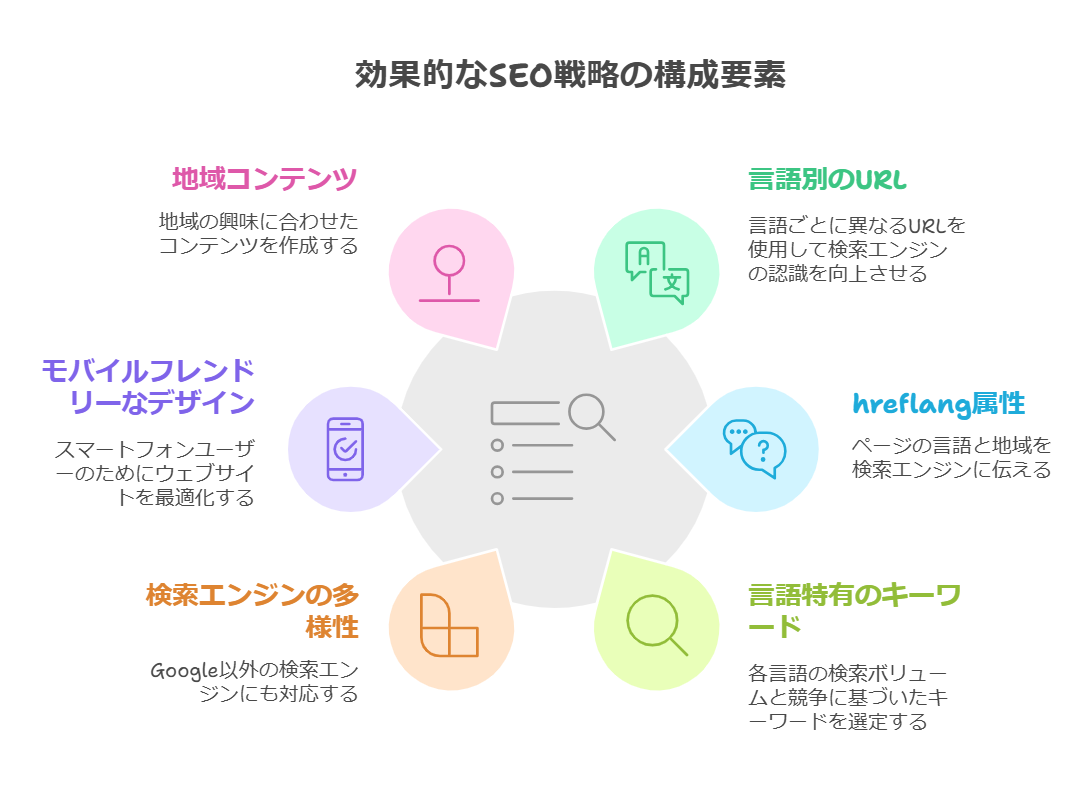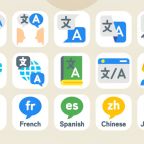What should I pay attention to when creating an English website? The differences between Japanese and English websites are introduced in an easy-to-understand manner!
Basic information on how to avoid mistakes in English website development
When creating an English website, it is necessary to pay attention to points that are different from those for a Japanese website. Just as Japanese people are often surprised by the design and sense of style when they visit other countries, foreigners may find Japanese website design "unfamiliar" or "difficult to understand. As a result, many foreigners give up browsing before obtaining information.
Strategies for attracting foreign visitors differ from those for Japanese websites. In order to capture inbound demand and succeed in overseas business, it is important to create a website with the following points in mind.
Clarify the purpose of English website production
First, have a clear purpose as to why you want to create an English website.
We want to spread our new products and services abroad!
We want to deliver information to our overseas customers!
I want to do business with overseas companies!
The content of the website to be created will vary depending on the purpose, such as
Set specific target users
Next, think specifically about who you want to see on your website.The target audience is too broad to be lumped under "foreigners." By clarifying the target users more clearly, such as whether they are from English-speaking countries, mainland China, or Taiwan, it is possible to increase the effectiveness of attracting and constraining customers. Where do you want to be seen, at what age, what are your interests, what language do you use?and so on, and create a website with content that is appropriate for them.
How will you operate your English website? Do you update it? How often?
The strategy for multilingual website content varies greatly depending on whether it is updated or not.
Assumption of renewal
Mirror Content: We recommend mirror content that is identical to the Japanese version in multiple languages. This method is recommended for those with low budgets and as little manpower as possible. You can either translate existing pages in the manual or use an automatic translation tool.
We also offer a low-cost (from 29.000 yen) automatic translation tool → native translation check plan that combines the two.
When renewal is difficult
Static content: We focus on static content that does not need to be updated frequently, such as basic information or introduction of products and services, and create as much of it as possible in the initial website development.
- Reduce update frequency: Update less frequently and only update important information.
- FAQ format: Frequently asked questions, etc., are summarized in an FAQ format to reduce the frequency of updates.
Operating a multilingual website is expensive in terms of human resources and costs. Ideally, it would be desirable to have sufficient budget and personnel to update all content on a regular basis, but in reality this may be difficult in some cases. The important thing is to choose the most appropriate operation method according to the budget and staffing situation.
Choose an appropriate domain name and server
When creating a website for a foreign audience, the choice of domain name and server is an important factor in determining the success of the website.For example, if your target users are all Americans, we recommend that you also sign up for an American server. Here we will explain in detail the key points for choosing an appropriate domain name and server, taking into account the more technical aspects.
Key Points for Selecting a Domain Name
.com domains are common: They are the most recognized and trusted domains in the world. However, since it is a popular domain, there is a good chance that your desired domain name is already in use.
Also consider ccTLDs for your target country: choosing a ccTLD (country specific top-level domain) for your target country, such as .co.uk (United Kingdom) or .fr (France), may give you an advantage in search engine optimization in that country.
Match the brand name: Match the name of the company or service to unify the brand image and make it easy to remember.
- Choose short, easy-to-remember, relevant words: Domain names that are too long or too complex are difficult for users to remember and cause typos.
Avoid hyphens as much as possible: Hyphens can cause typing errors and may not be recognized correctly by search engines.
Points to consider when selecting a server
Fast and stable servers: Since users from all over the world will be accessing the site, it is important to choose a fast and stable server. Of course, you need to choose a server company in a country that matches your target users.
Complete security measures: Choose a server with complete security measures to minimize the risk of hacking and data leakage.
Multilingual support: Selecting a server that supports English as well as other languages will make it easier to support future multilingualization.
Backup capabilities: Choose a server with regular backup capabilities to prevent data loss.
Support system: Make sure you have a support system in place that can respond quickly to any problems that may arise.
Recommended server types
Shared servers: These are relatively inexpensive servers that are easy for beginners to handle. Because many users share a server, performance may be inferior to other types.
VPS servers: A form of virtual server rental that offers higher performance and more customization than shared servers.
Dedicated servers: The most powerful and flexible, but also the most expensive, since you have exclusive use of one server.
Other Notes
SSL Certificates: To increase the security of your web site, consider installing an SSL certificate.
- CDN: By using servers distributed around the world, you can improve the display speed of your website.
Global DNS: Use a global DNS for stable access from anywhere in the world.

Importance of Search Engine Optimization (SEO)
SEO is very important in English website development. We aim to achieve high rankings in search engines by developing SEO strategies tailored to the countries and regions we target.
Separate URLs for each language
Each language page should be created with a different URL. For example, "tokyo.com" for the Japanese version and "tokyo/en.com" for the English version. Search engines recognize different URLs as different pages and evaluate each one individually.
Set hreflang attribute
The hreflang attribute tells search engines which page is for which language and region. By setting the correct hreflang attribute, search engines can display pages that are most relevant to the user's search query.
Keyword selection for each language
Different keywords are often searched for in each language. Research the search volume and competition in each language and select appropriate keywords. It is important to choose keywords with natural expressions by having them translated by local people or experts, not by translation tools.
Compatible with search engines in various countries
Take measures for major search engines in each country, such as Bing, Baidu, etc., as well as Google. Each search engine has different algorithms and evaluation criteria, so measures should be tailored to each.
Mobile-friendly design
Mobile-friendly design is essential for the increasing use of smartphones. We provide a comfortable browsing experience for mobile users by improving display speed and adopting responsive design.
Localized content
Users in different countries have different interests. Creating region-specific content and responding to user needs can increase engagement.
local SEO
Use local search engines, such as Google My Business, to implement local SEO strategies as well. Registering information about local stores and services will attract customers from the area.
Language selection (non-English speaking, Korean, Chinese)
In recent years, the number of Asian tourists and foreign residents in Japan has been increasing. For those who are not comfortable with English, decide which language you will use for your website, such as Korean or Chinese, if your target users are mostly non-English speaking. Choose the appropriate language depending on the country or region you are targeting. If you want to support more than one language, develop a multilingualization strategy.
Differences from Japanese website and points to note
Different nuances of language and appropriate expressions
The same word can have completely different meanings in Japanese and English. Instead of a direct translation, have a native speaker check it for you. Choose appropriate expressions, taking cultural background into consideration.
Different cultural backgrounds and designs
Design is more than just visual expression; it strongly reflects cultural backgrounds. In particular, since aesthetic sensibilities and attitudes toward design differ greatly between Japan and other countries, it is important to have a deep understanding of these differences when designing internationally.
Differences between Japanese and Foreign Designs
aesthetic sense
Japanese design is characterized by subtlety and understatement based on nature and traditional aesthetics. In addition, there are many websites that use a lot of advertisements and colors, such as Don Quijote's. Such websites are often perceived by foreigners as difficult to understand because of the overload of information. On the other hand, Western design is very simple, with bold and dynamic expressions.
color usage
In Japan, neutral colors such as white, black, and gray, as well as soft colors that evoke images of nature, tend to be preferred. Overseas, on the other hand, more vivid and contrasting color combinations are more common.
How to perceive space
In Japan, there is a tendency to value margins and emphasize shading to express depth and three-dimensionality. On the other hand, in Europe and the U.S., the emphasis is on the active use of space to create visual impact.
Multilingualization Strategies and Localization
If you wish to support multiple languages, you will need to develop a multilingualization strategy. In particular, if there is an in-house translator, it is important to have an operational system in place in case that translator suddenly leaves the company.
localization
It is important to localize the content to adjust it to the culture and customs of each country, rather than simply translating it. For example, date labels, currency, units of measurement, etc. are different in each country and should be modified to suit the region.
Common mistakes and countermeasures in English website production
misunderstanding caused by a literal translation
Problems:. If you translate the Japanese nuance as it is, it may be unnatural in English, or it may be taken to mean something completely different.
Countermeasures:. Be sure to have it translated and proofread by a native speaker, and make sure that the language is natural and takes into account cultural backgrounds and customs.
Lack of identification of target audience
Problems:. Since it is unclear to whom the message is directed, the content may be blurred and may not be sympathetic.
Countermeasures:. Define what age group, nationality, and interest groups you wish to reach, and create wording and content appropriate for that demographic.
Lack of SEO
Problems:. If your website does not rank highly in search engines, it will be a waste of time and effort.
Countermeasures:. Be thorough in your SEO efforts by selecting keywords and optimizing content for the countries and regions you are targeting.
Mistranslations due to direct translation and the importance of native checking
Mistranslations due to direct translation are very common in the creation of English websites. This is because the nuances of language and cultural backgrounds differ greatly between Japanese and English,A literal translation may not convey the intended meaning accurately or may cause misunderstanding.
Checks by native speakers are critical to avoiding these problems. Native speakers have a deep understanding of the nuances of the language and its cultural background, and can modify the language to be natural.
Benefits of Native Checking
- Accurate meaning conveyance: Avoids mistranslations due to direct translation and accurately conveys the intended meaning.
- Natural expressions: Can be modified to be natural expressions as used by native speakers.
- Cultural contextualization: The wording can be modified to take into account the cultural context of each country.
- Improved appeal to target audience: Information can be conveyed more effectively by using wording and expressions that match the target audience.
Globalization and Regionalism in Design
Design is more than just visual expression; it is an important element that reflects culture and values. When designing from a global perspective, it is necessary to balance a universal design that appeals to users around the world in common with local characteristics that match the culture and tastes of each region.
globalization
- Commonality: Simple design that can be commonly understood by users around the world, based on a universal aesthetic
- Consistency: Designs that unify the brand image and create a similar impression around the world
- Efficiency: Reduce costs by minimizing design changes when deploying in multiple regions
regional character
- Cultural sensitivity: Understanding local culture, history, and values, and incorporating designs that match them.
- Language: Adjust text and fonts for different languages
- Colors: Some colors are preferred in different regions, others should be avoided
- Symbolism: incorporate symbols and motifs common to each region
Balance between globalization and localization
Striking a balance between globalization and localization is a very difficult task. However, by successfully combining the two, we can achieve a design that is acceptable to users around the world.
Slow loading speed and user experience
The loading speed of a website has a significant impact on the user experience. Websites with slow display speeds can stress users, leading to higher abandonment rates and lower conversion rates.
Need for mobile compatibility
Mobile-friendly design is essential because of the increasing use of smartphones. There are many production companies that are not so particular about the design, such as those that are very particular about the PC screen and easy to view, but the mobile display is out of alignment or difficult to handle.
Three key points for successful English web production
- Clarify target users: It is important to clarify the countries and regions to which you want to deliver information, and to create content and designs that are tailored to your target users.
- Understanding of cultural differences: It is necessary to understand the culture, values, and business practices of each country, and to choose expressions and designs that match them.
- Thorough SEO: It is important to have a strong SEO strategy, including keyword selection, content optimization, and backlink acquisition, to ensure high rankings in search engines.
Summary of English website production
English website development is essential for global expansion. To succeed, it is important to not only translate content for the target country or region, but also to understand the culture and values, and to optimize design and SEO. Mobile compatibility and continuous updates and improvements are also essential. It is especially important to check the translation by native speakers to ensure that it is natural and not a direct translation. An effective English website can be created by taking the user's point of view and providing information that meets their needs in an easy-to-understand manner.








